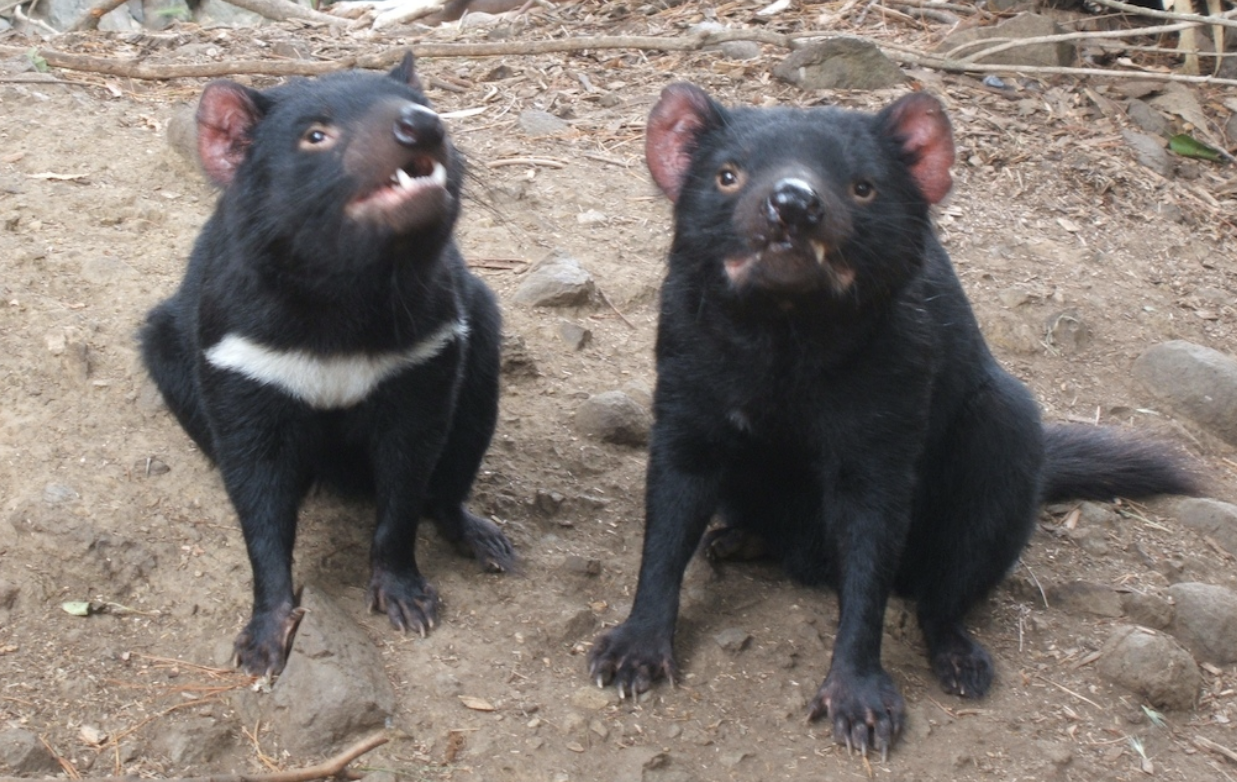The Plight of the Tasmanian Devil

Horatio and Bongo
|
Endangered!The Tasmanian devil is now listed as an endangered species by the IUCN Red List (International Union for Conservation of Nature). Having once roamed across the Australian continent, it is now only found in the wild on the island of Tasmania. The Tasmanian devil is the largest carnivorous marsupial in the world, weighing up to 12kg when fully grown and standing over 30cm tall at the shoulder. Tasmanian devils are nocturnal animals, with a loud and disturbing screech. It is believed that the the screeching and grunting of the devils at night led the early Tasmanian settlers to give them the name "devils". The Tasmanian devil's large head and neck allow it to generate the strongest bite per unit of body mass of any mammalian land based predator according to this report at the National Wildlife Federation. Their jaw is easily strong enough to crush and eat bones. |
|
While the devil is now a protected species in Tasmania, it has not always enjoyed that status. Devils were considered a nuisance by the early European settlers and in 1830 the Van Diemen's Land Co. introduced a bounty scheme to eradicate Tasmanian devils, from the northwest settlements on the island. A hunter would receive 2/6 (25 cents) for male devils and 3/6 (35 cents) for females. After over a century of trapping and poisoning, the population of Tasmanian devils suffered and was heading for extinction. Finally, Tasmanian devils received protected status in 1941 and the population gradually increased up until 1996 when a strange tumorous growth was found on the faces of a number of wild devils. The disease is now referred to as Devil Facial Tumour Disease (DFTD) and to date the real cause of the disease is unknown. Between 1996 and 2016 the disease is estimated to have reduced the devil population by 95%. The Tasmanian Government now runs the Save the Tasmanian Devil program to assist in the understanding of DFTD and to preserve populations of the devils that have not contracted the disease. More information can be found on their website. 
|
|
Gone is gone forever.
